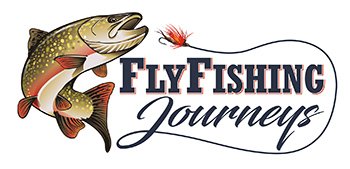The original Black Ghost, by the late great Herb Welch, has been one of the most popular streamers in Iceland throughout the years. This pattern borrows the famous Black Ghost color scheme, but other than that, practically all materials are different. It’s a fun tie, and the zonker wing gives it a lot of movement in the water.
Material List
Hook: Ahrex NS118 #4
Weight: Lead Free Wire
Thread: Veevus 10/0 Black
Tail: Yellow rabbit zonker
Wing: Black barred, white rabbit zonker
Rib: Silver UTC wire
Body: Ice Dub Black
Tinsel: 2 strands Pearl Flashabou
Thread Cover: Fl.Yellow Glo-Brite
Head 1: Black Squirrel zonker
Head 2 : Yellow rabbit zonker
Eyes: 4mm 3D Silver
Step 1
Start by putting a few wraps of lead-free wire on the hook shank. This is a fully dressed fly and as such it needs a bit of weight to get down.

Step 2
Snip a small bunch of hairs from the yellow rabbit zonker and tie them in toward the back of the hook for the tail.

Step 3
Tie the yellow rabbit zonker down securely and move your thread to the back of the hook.

Step 4
Take a strip of the white zonker and split the hairs to prepare the material to be tied in. Tip: Wet your fingers to manage the hairs more easily.

Step 5
Take a few inches of the silver UTC thread from the spool and secure it to the hook shank.

Step 6
Move your thread to the front of the hook, apply your black Ice Dub. Now, tie the dubbing down the back of the shank, and up to the front again. (See below for example)

Step 6 Continued
Tip: This is how the finished body should look.

Step 7
Counter wrap the wire up the shank to lash down the dubbing.

Step 8
Pull the white rabbit zonker strip forward. Hold it tight, and secure behind the eye of the hook.

Step 8 Continued
Snip the excess zonker and tie the skin/hide further with a few extra thread wraps.

Step 9
Take 1-2 strands of pearl flashabou and secure one to each side of the fly.

Step 10
Split the thread, or form a dubbing loop, and insert a small strip of the black squirrel zonker. Spin the zonker and wrap in front of the white zonker wing.

Step 11
Do the same with the yellow rabbit zonker. The head/collar should cover about half of the hook shank. Adjust the hair accordingly. Once the yellow zonker is wrapped, tie the fly off.

Step 12
(Optional) The body of the fly is tied with black thread. You can end the fly by covering it with a Fl. Yellow Glo-brite. This step is optional as you can either tie the whole fly with a yellow thread, or leave the black tread at the end.

Step 13
The 3D eyes come with an adhesive on the back but it’s not enough to keep the eyes in place. Apply a small amount of UV resin on the back, place the eyes where you want them and secure them with a UV torch. Super glue can also be used, but that limits the time you have to adjust the eyes.

Step 14
Once you’re happy with the eyes, secure them with your UV torch. Tip: Doing one eye at a time is easiest for a symmetrical look.

Step 15
To further secure the eyes, apply a small amount of UV resin over both eyes and form as shown. Tip: To make the fly last longer, apply a thin coat of varnish over the resin and let dry.

As I mentioned, this is a fully dressed fly and as such, needs some help to get down. The lead wraps help a little, but to fish this pattern to its fullest, I recommend fishing it under a sink tip. This fly is best fished on the swing with various retrieval techniques. The fly can be tied in many sizes, although I feel that it’s best proportioned in a size #4 – #6. I typically fish this fly for Brown Trout and Arctic Char, but it could also be used for Rainbows, Brook Trout, and landlocked salmon.





